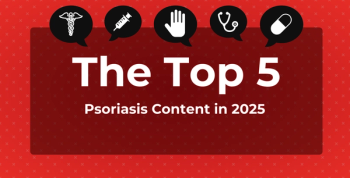
5 Ways ACOs Can Improve Care, Achieve Meaningful Savings
Key Takeaways
- Data-driven support and analytics enable timely decision-making, identify care gaps, and improve clinical and financial performance in value-based care.
- Effective care coordination involves a dedicated team, aligning providers and facility leadership to focus on high-impact opportunities and proactive interventions.
Shared savings reflects continued growth of long-term-care ACOs in Medicare’s value-based models.
Sound Long-Term Care Management (SLTCM), an accountable care organization (ACO) participating in the Medicare Shared Savings Program,
In an interview with The American Journal of Managed Care® (AJMC®), Mike Camacho, president of SLTCM, identifies 5 key strategies that ACOs can utilize to improve care and achieve meaningful savings, and what they may look like in practice.
1. Data-Driven Support and Analytics
Data-driven support and analytics are central to ACO success, providing the foundation for timely, informed decision-making across complex patient populations, according to Camacho. For ACOs serving long-term care patients, who are often older and clinically more complex than typical community-based populations, aggregating data from multiple, disparate electronic medical records is essential.
By consolidating patient information and aligning it with Medicare data, ACOs can identify gaps in care, track quality metrics, and monitor utilization trends in real time. Tools such as dashboards for providers and facilities, real-time alerts for hospital admissions and discharges, and analytics that highlight outliers allow clinical teams to intervene proactively, coordinate follow-up care, and manage resources efficiently.
These insights also enable targeted discussions with facility operators and providers about appropriate utilization, improving outcomes while controlling costs, and demonstrating how data analytics directly drive both clinical and financial performance in value-based care.
“We're highlighting the data; we're not solving for it, [but] we're giving that information to both the primary care provider [and] the facility to act on appropriate utilization, spend, and those sorts of things,” said Camacho. “The data is extremely powerful.”
2. Care Coordination
Care coordination is a critical driver of ACO success, particularly for complex, long-term care populations, explains Camacho. Effective coordination relies on a dedicated core team that brings together client success directors and clinical experts, including quality improvement nurses and senior physician leaders.
By reviewing and analyzing data before meetings with providers and facility partners, the ACO team at SLTCM ensures that discussions are focused and actionable, targeting the highest-impact opportunities to improve patient care. Additionally, incorporating facility leadership alongside providers allows for alignment on follow-up visits, preventative care, and other priority interventions.
“I think our team and our dynamic focus around both the providers and the facilities is really unique,” said Camacho. “Now we are incorporating the facility leadership in with these calls with the providers to say, ‘Here's the latest and greatest data; this is what's happened over the last month, [and] here's where we want to work with you guys to focus on follow-up visits, [and] preventative care.’ I think that's been crucial from a care coordination standpoint.”
This structured, collaborative approach ensures that care is proactive, consistent, and closely monitored, enabling ACOs to improve outcomes while efficiently managing resources across both providers and facilities.
3. Provider Engagement
Provider engagement and trust are essential for ACO success, particularly with post-acute care providers who are often skeptical of value-based care programs, explains Camacho, who noted that many providers had been burned by previous ACOs, being excluded for high costs that were inherent to their patient populations, creating distrust.
“One of the odd sorts of discussions we had with a lot of groups was they were very distrusting of ACOs,” said Camacho. “Even in my own experience, when I had led hospital-based or community-based ACOs in my past, what you find is the way that ACOs are set up, there's sort of a financial target to generate the shared savings.”
Building engagement at SLTCM required consistent transparency, showing providers that the patients represented in the data were their own, and providing actionable insights from aggregated, disparate electronic medical records and CMS data. By regularly reviewing performance, following up on promised actions, and demonstrating the link between provider interventions and avoided admissions or improved outcomes, the ACO was able to foster accountability, strengthen relationships, and gradually overcome barriers, ultimately reinforcing trust and collaboration.
4. Preventative Care
Preventative care in ACOs focuses on keeping patients healthy and avoiding acute episodes before they occur. Camacho emphasized strategies such as regular wellness visits, advanced care planning, and patient education to address potential health issues early. In practice, these approaches are most effective when patients have consistent checkups, engage in discussions about their care preferences while healthy, and receive timely interventions to manage risks.
“Let’s not fight the fire while it’s happening; let’s prevent the fire,” said Camacho. "Let's do some things that are preventative around wellness visits and advanced care planning and have these discussions while the patients are healthy so that we can mitigate issues downstream."
By prioritizing prevention, ACOs can reduce readmissions, improve outcomes, and ensure care is proactive rather than reactive, supporting both patient well-being and the organization’s value-based goals.
5. Telemedicine Utilization
Telemedicine has become a key tool for ACOs in managing high-risk, long-term care populations while controlling costs. Camacho described a national telemedicine program deployed in more than 300 nursing homes, allowing physicians to treat patients in place for issues such as medication refills, intravenous fluids, or antibiotics, rather than defaulting to costly hospital admissions that average $35,000 to $45,000 per episode. The service is tailored for nights, weekends, and holidays, providing a physician safety net for nursing staff and families.
Telemedicine also supports care coordination by alerting emergency providers when a patient must be sent out and ensuring follow-up care is managed once they return to the facility. By offering real-time clinical support, telemedicine reduces unnecessary hospitalizations, stabilizes patients on-site, and strengthens overall ACO performance in both clinical outcomes and cost management.
“Our telemedicine team is tailored to nights, weekends, and holidays,” said Camacho. We are that safety net approach of actual physicians who are available to the nursing staff and to the family members. If folks have questions about their loved one, we're there to help stabilize those patients, and if that patient absolutely needs to be sent out because there is a decline in their condition, our physicians are picking up the phone and calling the emergency provider to give them a heads up on that patient's medical condition.”
Newsletter
Stay ahead of policy, cost, and value—subscribe to AJMC for expert insights at the intersection of clinical care and health economics.








































